The Kawasaki Z1000 was one of those bikes that left a lasting impression on me. When it launched in 2014 with its Sugomi styling, it looked like something from the future. It was all muscle and menace, every angle carved to intimidate.
I wanted one. Badly.
But as time went on, I went with bikes that made more sense. Machines that were cheaper to maintain, easier to live with, or simply faster. Still, the Z1000 never really left my head. It was one of those machines that lived rent-free in the back of my mind. It still does to this day.
Fast forward to 2026, and Kawasaki has revived the spirit of the Z1000 in a big way. Sure, from the styling alone, you could argue that the new Z1100 SE ABS is just a rehash of the old formula. But if you take a closer look, you’ll realize that it’s a complete reinvention, combining Kawasaki’s tradition of raw power with modern sophistication. Let's take a closer look at all the details, and see if the rather hefty $14,999 MSRP on this bike is actually worth it.
For starters, the 1,099cc inline-four engine is now the largest ever fitted to a Z bike, and it’s based on the one used in the Ninja 1100SX SE and Versys 1100. But this isn’t just an engine swap. The pistons, camshafts, and valve springs are all unique to the Z1100, tuned to deliver smoother low- and midrange torque rather than just peak power. Output is a healthy 134 horsepower at 9,000 rpm and 83.3 pound-feet of torque at 7,600 rpm. Kawasaki also gave it taller fifth and sixth gears for more relaxed highway cruising, a race-derived assist and slipper clutch for smoother shifts, and a 4-2-1 exhaust with an under-engine pre-chamber that helps centralize mass while keeping emissions in check.
Where the Z1000 was a mechanical animal with minimal rider aids, the Z1100 SE is loaded with brains. It gets an all-new IMU that powers systems like Kawasaki Cornering Management Function, which works hand-in-hand with traction control and ABS to keep the bike composed mid-corner. The system monitors lean angle, braking, and throttle input, then adjusts power and brake force to keep things stable.
There’s also an up and down quickshifter for clutchless upshifts and downshifts, electronic cruise control for long rides, and four riding modes (Sport, Road, Rain, and Rider) for different conditions. All of this is displayed on a sharp five-inch TFT screen that also connects to Kawasaki’s Rideology app, letting you log rides and adjust settings from your phone.

The chassis is new too. Gone is the steel trellis frame of the smaller Z models, replaced with a stiffer aluminum twin-tube frame that uses the engine as a stressed member. The design makes the bike narrower between the knees and improves handling feedback. There are three rigid engine mounts and one rubber mount at the rear to strike a balance between sharpness and comfort. Ergonomics have also been revised. The handlebars are now wider and slightly forward, the footpegs are sportier, and the tank-to-tail transitions are smoother for easier body movement when cornering. Kawasaki even added a USB-C charging port on the handlebars for convenience.
As an SE model, the Z1100 comes with premium suspension and braking gear right out of the box. Up front is a fully adjustable 41mm Showa Separate Function Fork–Big Piston (SFF-BP), while the rear gets an Öhlins S46 shock with a remote preload adjuster so you can tweak settings without tools. Braking is handled by Brembo M4.32 monoblock calipers biting dual 11.8-inch discs up front, with a single 9.8-inch disc at the rear. Steel-braided brake lines are standard. It rides on lightweight six-spoke cast wheels wrapped in Dunlop Sportmax Q5A tires measuring 120/70ZR17 front and 180/55ZR17 rear.
Then there’s the styling. Kawasaki calls it “Evolved Sugomi,” and it’s easy to see why. The bodywork looks more sculpted and muscular, with a compact LED headlight and exposed engine covers giving it a leaner, more aggressive stance. The metallic matte gray colorway complements the clean lines, adding a more mature look that fits its flagship status.
Gallery: 2026 Kawasaki Z1100 SE
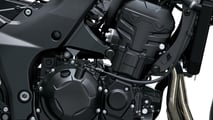
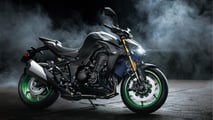
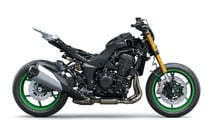
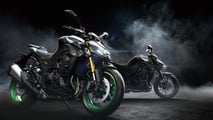
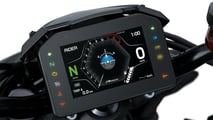
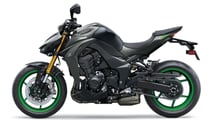
Compared to rivals like the Yamaha MT-10 and Suzuki GSX-S1000, the new Z1100 SE looks like it could finally hold its own. The MT-10’s crossplane engine still wins in sound and top-end rush, but the Kawasaki’s smoother torque curve and advanced electronics make it a better everyday machine. The GSX-S1000 remains the budget option with solid performance, but it lacks the Öhlins suspension, Brembo brakes, and fancy frame that make the Z1100 properly premium.
What Kawasaki has done here is interesting. It hasn’t just made a faster or flashier supernaked. It’s built something that feels deeply engineered and thoughtfully evolved. It’s a bike that respects the Z lineage while embracing what riders actually want today: comfort, control, and a little bit of high-tech flair without losing its edge.
Over the years, I’ve tested countless bikes that were faster, fancier, or more exotic. But the Z1100 SE is one I’m genuinely excited to ride. It feels like the return of an old friend. But one that’s grown up, smarter, more sensible, and more capable. And if it rides as good as it looks on paper, it just might be the best expression yet of Kawasaki’s Sugomi philosophy. And a bike that just might end up as a permanent resident of my garage.
Source: Kawasaki








